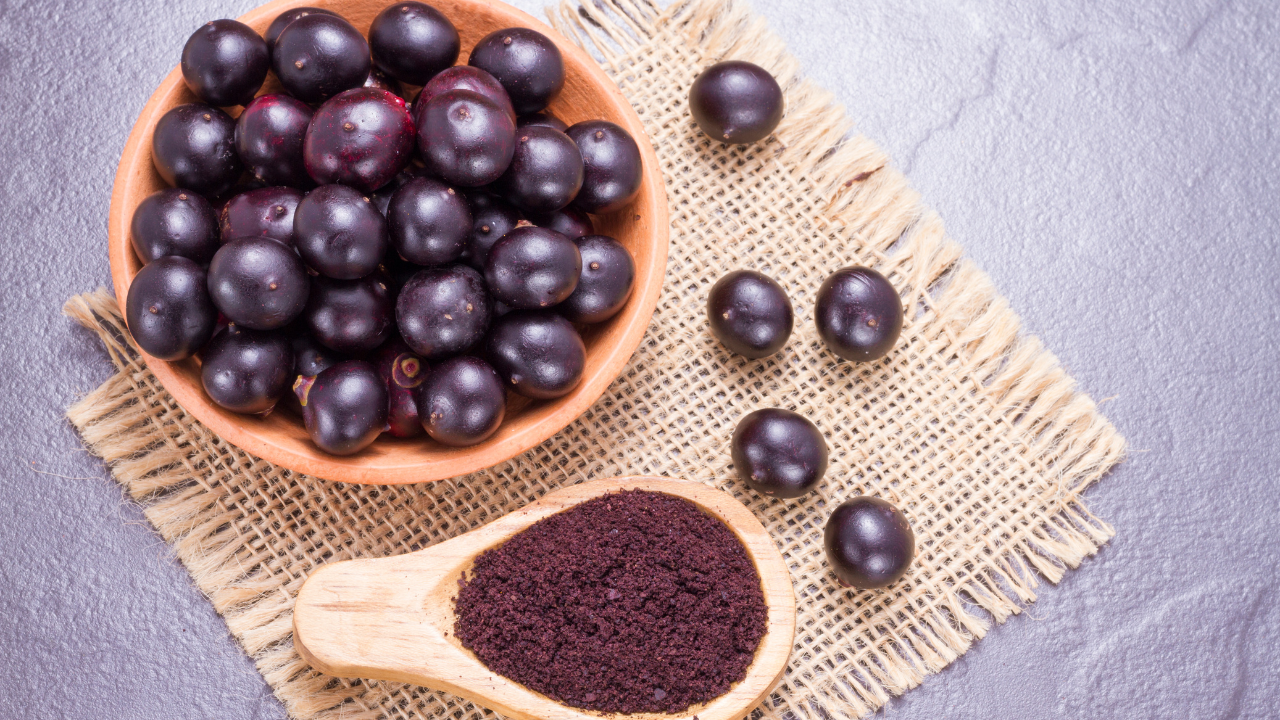Dietitian's Thoughts on 3 Common Superfoods
You might have heard of the term “superfood” being used to describe foods that are supposedly packed with nutrients and come with a load of health benefits.
Although some food companies may use this label on their products as a marketing strategy to increase the appeal towards health-conscious consumers, there is in fact a certain degree of truth behind why we praise these foods.
Let’s take a look at 3 of these nutrient-dense foods and the evidence to support the associated health claims, so we can break down what really makes them so “super”.
Maca
Maca, also known as Peruvian ginseng, is a root that is native to Peru. It is traditionally used for its medicinal properties, but nowadays has grown in popularity as a supplement that can also be added to smoothies, oatmeal or other items in a powder form (1).
A summary of the current research available reveals many associated benefits of eating maca. In particular, consuming this root has been found to be associated with effects on hormones in both men and women.
In adult men, studies have found an increase in libido and improvement in sexual desire (2), a possible increase in fertility (increased sperm count and mobility) (3), and a potential reduction in erectile dysfunction (4).
In women, some studies provided some evidence supporting the use of maca in relieving menopausal symptoms such as hot flashes, vaginal dryness, or irritability in women by balancing hormones and regulating estrogen levels (this may be beneficial for women with PCOS) (5, 6).
The literature also indicates possible effects of maca on the brain, including the reduction of anxiety and depression symptoms due to its flavonoid content (7), in addition to improvements in learning and memory processes found in rats (particularly with the use of black maca) (8).
Furthermore, maca consumption has been found to enhance sports performance (particularly in endurance activity), glucose tolerance and the activity of antioxidants in the blood in rats (9, 10); and in humans it was found to help reduce diastolic blood pressure (11).
Spirulina
Spirulina is a blue-green alga that gained its popularity after being successfully used as a dietary supplement for astronauts (12). Similar to maca, it also comes in powder form and can be used in smoothies, juices or even sprinkled on salads or soups.
Spirulina is packed with nutrients, with 100 grams containing 57.47g of protein, 207% of the RDA of Vitamin B1, 306% B2, 85% B3, 55% Magnesium, 219% Iron, as well as omega-3 fatty acids (13). Based on numerous studies, adding spirulina to your diet may provide numerous benefits related to its antioxidant capacity from containing phycocyanin, which can help fight inflammation in the body (14) and offer therapeutical benefits against oxidative stress-associated diseases like cardiovascular diseases (15). Also in relation to preventing chronic diseases, spirulina has been associated with the ability to control blood glucose levels in diabetics with Type 2 diabetes (16); lower triglycerides, blood pressure, and LDL cholesterol in the blood which can help prevent cardiovascular disease and promote heart health (17); and boost metabolism to help with weight loss (18). Not to mention, consuming this substance may help increase stamina for endurance activities (19) and even be beneficial for skin health (20)!
Acai
One of the more tasty superfoods, acai is a type of berry that has blown up all over Instagram and used in trendy restaurants to make the infamous acai smoothie bowl. Originating from acai palm trees in South American rainforests, they have long been an important source of nutrition for Indigenous peoples in the Amazon (21).
Research findings from several studies show that these may be numerous health benefits related to this berry’s potent antioxidant action from flavonoids in the body, which serves to protect our cells from damage from free radicals (linked to cancer, heart disease, and more) (22). Acai especially contains a relatively higher amount of antioxidants than other fruits such as blueberries and cranberries as measured by an Oxygen Radical Absorbance Capacity (ORAC) score (23).
This explains why there is so much evidence suggesting the disease-fighting potential of this food, including studies finding that consuming acai may decrease LDL and total cholesterol in the blood, as well as glucose and insulin levels (24); and that it may be beneficial for the prevention of colon cancer (25).
Lastly, consuming acai may protect against age-related diseases such as Alzheimer’s and Parkinsons through improving learning and memory processes; it does this by counteracting inflammation in brain cells through a process known as autophagy and also improving blood circulation in the brain (26).
Summary
Overall, a review of the evidence-based research from numerous studies provides a solid background to support the fact that these 3 powerful foods seem to come with many health benefits, those of which may definitely be worth checking out if you are looking for natural ways of improving certain health issues and possibly preventing yourself against various diseases.
However, always remember that no single food can solve a certain health condition or be the answer to all your body goals, and if you are interested in purchasing and consuming other foods with the attached title of “superfood”, make sure to do some research before believing any health claims that you may hear!
For more gut-health and fitness nutrition tips, be sure to follow along with me on instagram at leighmerotto_rd.

BE SURE TO FOLLOW ME HERE
References:
https://www.sciencedirect.com/science/article/abs/pii/S1756464612000436
https://en.wikipedia.org/wiki/Spirulina_(dietary_supplement)#Food_and_nutrition
https://pubmed.ncbi.nlm.nih.gov/24691130/





